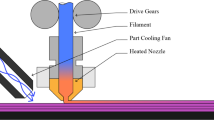Abstract
In this paper, we present a data mining based methodology for optimizing the outcome of a batch manufacturing process. Predictive data mining techniques are applied to a multi-year set of manufacturing data with the purpose of reducing the variation of a crystal manufacturing process, which suffers from frequent fluctuations of the average outgoing yield. Our study is focused on specific defects that are the most common causes for scraping a manufactured crystal. A set of probabilistic rules explaining the likelihood of each defect as a function of interaction between the controllable variables are induced using the single-target and the multi-target Information Network algorithms. The rules clearly define the worst and the best conditions for the manufacturing process, also providing a complete explanation of all major fluctuations in the outgoing quality observed over the recent years. In addition, we show that an early detection of nearly the same predictive model was possible almost two years before the end of the data collection period, which could save many of the flawed crystals. The paper provides a detailed description of the optimization process, including the decisions taken at various stages and their outcomes. Conclusions applicable to similar engineering tasks are also outlined.
Similar content being viewed by others
References
Babu J., Frieda W.H. (1993) Predictive control of quality in a batch manufacturing process using artificial neural network models. Industrial & Engineering Chemistry Research 32(9): 1951–1961 doi:10.1021/ie00021a019
Biderman, S., Horowitz, A., Einav, Y., Ben Amar, G., Gazit, D., Stern, A., et al. (1991). Production of sapphire domes by the growth of near-net-shape single crystals. In Proceedings of SPIE 1535 (Passive Materials for Optical Elements) (pp. 27–34).
Braha D., Elovici Y., Last M. (2007) Theory of actionable data mining with application to semiconductor manufacturing control. International Journal of Production Research 45(13): 3059–3084 doi:10.1080/00207540600654475
Bryant R.E. (1986) Graph-based algorithms for Boolean function manipulation. IEEE Transactions on Computers C-35(8): 677–691
Cook D.F., Ragsdale C.T., Major R.L. (2000) Combining a neural network with a genetic algorithm for process parameter optimization. Engineering Applications of Artificial Intelligence 13: 391–396 doi:10.1016/S0952-1976(00)00021-X
Famili A. (1994) Use of decision-tree induction for process optimization and knowledge refinement of an industrial process. Artificial Intelligence for Engineering Design, Analysis and Manufacturing. (AI EDAM) 8(1): 63–75
Han J., Kamber M. (2006) Data mining: Concepts and techniques (2nd ed.). Morgan Kaufmann, San Francisco, CA
Horowitz A., Biderman S., Ben Amar G., Laor U., Weiss M., Stern A. (1987) The growth of single crystals of optical materials via the gradient solidification method. Journal of Crystal Growth 85(1–2): 215–222 doi:10.1016/0022-0248(87)90225-9
Horowitz A., Biderman S., Gazit D., Einav Y., Ben Amar G., Weiss M. (1993) The growth of dome shaped sapphire crystals by the GSM method. Journal of Crystal Growth, 128(1–4 pt 2): 824–828
Hur, J., Lee, H., & Baek, J.-G. (2006). An intelligent manufacturing process diagnosis system using hybrid data mining. In Advances in Data Mining (pp. 561–575). Springer-Verlag.
Kohavi, R., & Li, C.-H. (1995). Oblivious decision trees, raphs, and top-down pruning. In Proceedings of International Joint Conference on Artificial Intelligence (IJCAI) (pp. 1071–1077).
Last, M. (2004). Multi-objective classification with info-fuzzy networks. In Proceedings of the 15th European Conference on Machine Learning (ECML 2004). Lecture Notes in Artificial Intelligence 3201 (pp. 239–249). Springer-Verlag.
Last M., Kandel A. (2001) Data mining for process and quality control in the semiconductor industry. In: Braha D.(eds) Data mining for design and manufacturing: Methods and applications. Kluwer Massive Computing Series (Vol. 524). Kluwer Academic Publishers, Norwell, MA, pp 207–234
Last M., Maimon O. (2004) A compact and accurate model for classification. IEEE Transactions on Knowledge and Data Engineering 16(2): 203–215 doi:10.1109/TKDE.2004.1269598
Liau L.C.-K., Yang T.C.-K., Tsai M.-T. (2004) Expert system of a crude oil distillation unit for process optimization using neural networks. Expert Systems with Applications 26(2): 247–255 doi:10.1016/S0957-4174(03)00139-8
Lin J.L., Lin C.L. (2005) The use of grey-fuzzy logic for the optimization of the manufacturing process. Journal of Materials Processing Technology 160(1): 9–14 doi:10.1016/j.jmatprotec.2003.11.040
Maimon O., Last M. (2000). Knowledge discovery and data mining —the Info-Fuzzy Network (IFN) methodology. Boston: Kluwer Academic Publishers, Massive Computing.
Myers, R. H., & Montgomery, D. (2002). Response surface methodology: Process and product optimization using designed experiments (2nd ed.). John Wiley and Sons.
Quinlan J.R. (1986) Induction of decision trees. Machine Learning 1(1): 81–106
Quinlan, J. R. (1993) C4.5: Programs for machine learning. Morgan Kaufmann.
Author information
Authors and Affiliations
Corresponding author
Rights and permissions
About this article
Cite this article
Last, M., Danon, G., Biderman, S. et al. Optimizing a batch manufacturing process through interpretable data mining models. J Intell Manuf 20, 523–534 (2009). https://doi.org/10.1007/s10845-008-0148-7
Received:
Accepted:
Published:
Issue Date:
DOI: https://doi.org/10.1007/s10845-008-0148-7




